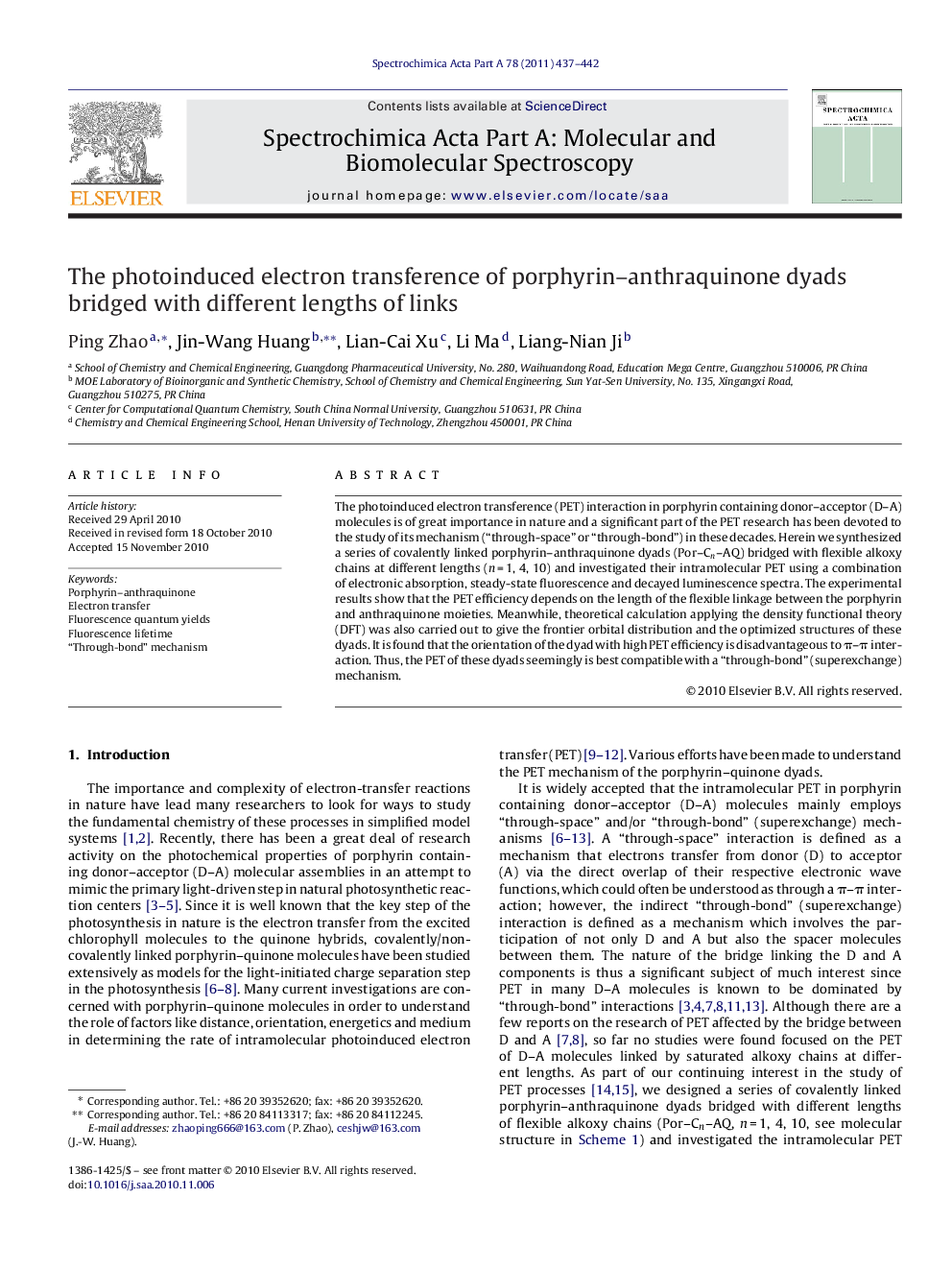| Article ID | Journal | Published Year | Pages | File Type |
|---|---|---|---|---|
| 1233768 | Spectrochimica Acta Part A: Molecular and Biomolecular Spectroscopy | 2011 | 6 Pages |
The photoinduced electron transference (PET) interaction in porphyrin containing donor–acceptor (D–A) molecules is of great importance in nature and a significant part of the PET research has been devoted to the study of its mechanism (“through-space” or “through-bond”) in these decades. Herein we synthesized a series of covalently linked porphyrin–anthraquinone dyads (Por–Cn–AQ) bridged with flexible alkoxy chains at different lengths (n = 1, 4, 10) and investigated their intramolecular PET using a combination of electronic absorption, steady-state fluorescence and decayed luminescence spectra. The experimental results show that the PET efficiency depends on the length of the flexible linkage between the porphyrin and anthraquinone moieties. Meanwhile, theoretical calculation applying the density functional theory (DFT) was also carried out to give the frontier orbital distribution and the optimized structures of these dyads. It is found that the orientation of the dyad with high PET efficiency is disadvantageous to π–π interaction. Thus, the PET of these dyads seemingly is best compatible with a “through-bond” (superexchange) mechanism.
